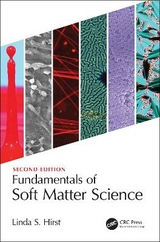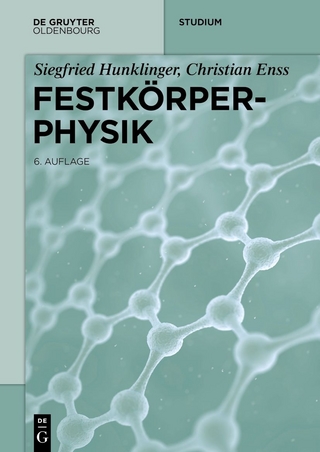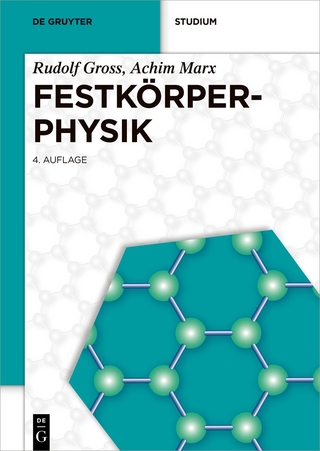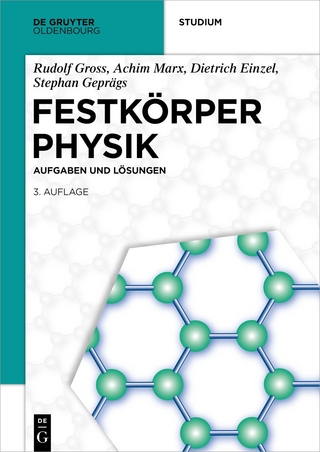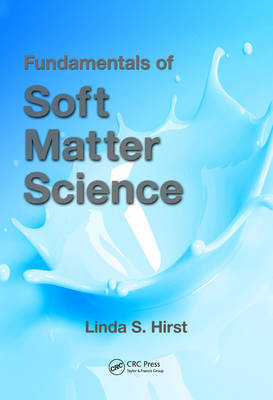
Fundamentals of Soft Matter Science
Crc Press Inc (Verlag)
978-1-4398-2775-8 (ISBN)
- Titel erscheint in neuer Auflage
- Artikel merken
Designed for beginners to the field with a basic scientific background, this readable book emphasizes conceptual understanding, minimizing detailed mathematical derivations. Each chapter is dedicated to a different group of soft materials, including liquid crystals, surfactants, polymers, colloids, and soft biomaterials. Each subject is broken down into the essential concepts: material structures and physical characteristics, some simple theoretical ideas, and important experimental methods. The book emphasizes commonly used experimental techniques and practical applications. Full color illustrations and photographs are incorporated throughout to help describe the systems and key concepts.
Linda S. Hirst, Ph.D., is a professor of physics at the University of California, Merced, where she runs a soft matter experimental research group and teaches introductory physics and condensed matter physics.
Introduction
Learning Objectives
What Is Soft Matter?
Basic Thermal Physics
Intermolecular Forces
Diffusion and Random Walks
Self-Assembly
The Phase Diagram
Aggregation and Assembly
Mechanical Properties of Soft Matter
Questions:
The Concept of Soft Materials and Their Characteristics
Review of Thermal Physics
Review the Mechanical Properties of Materials
References
Further Reading
Liquid Crystals
Learning Objectives
Introduction to Liquid Crystals
Anisotropy in Liquid Crystals
The Order Parameter
Thermotropic and Lyotropic Liquid Crystals
Birefringence in Liquid Crystals
Defect Textures
Thermotropic Liquid Crystal Phases
Experimental Techniques
Applications of Liquid Crystals
Questions
The Characteristics of Liquid Crystal Materials
Anisotropy and Birefringence
The Structure of Liquid Crystal Phases
Experimental Techniques and Liquid Crystal Technologies
References
Further Reading
Surfactants
Learning Objectives
Introduction
Types of Surfactants
Surface Tension and Surfactants
Self-Assembly and Phase Behavior
Membrane Elasticity and Curvature
Applications of Surfactants
Experimental Methods
Questions
Physical and Chemical Properties of Surfactants
The Hydrophobic Effect
The Importance of Molecular Shape on Phase Structure and Membrane Curvature
Applications and Experiments
References
Further Reading
Polymers
Learning Objectives
Introduction
Early Polymers
Polymer Structure
Liquid Crystal Polymers
Polymer Solutions
The Glassy and Polymer Melt Phases
The Mechanical Properties of Polymers
Experimental Techniques
Questions
Polymer Architecture
Polymers in Solution
Experimental Methods
References
Further Reading
Colloidal Materials
Learning Objectives
Introduction
Characteristics of Colloidal Systems
Colloids in Suspension
Competing Forces in Colloidal Dispersions
Interparticle Interactions
Colloidal Aggregation
Colloidal Crystals
Granular Materials
Foams
Experimental Techniques
Questions
Characteristics of Colloidal Systems
Colloidal Aggregation and Dispersion
Experimental Techniques
References
Further Reading
Soft Biological Materials
Learning Objectives
Introduction
The Composition of the Cell
The Cell Membrane
Protein Structures and Assemblies
Experimental Techniques
Questions
Biomaterials as Soft Matter
Experimental Techniques
References
Further Reading
Glossary
Appendix A: The Fourier Transform
Appendix B: Physical Constants and Conversions
Appendix C: Laue Scattering Theory
Appendix D: Entropy and Thermodynamic Equilibrium
Appendix E: The Amino Acids
Index
| Zusatzinfo | 49; 7 Tables, black and white; 138 Illustrations, black and white |
|---|---|
| Verlagsort | Bosa Roca |
| Sprache | englisch |
| Maße | 178 x 254 mm |
| Gewicht | 522 g |
| Themenwelt | Naturwissenschaften ► Chemie |
| Naturwissenschaften ► Physik / Astronomie ► Festkörperphysik | |
| ISBN-10 | 1-4398-2775-3 / 1439827753 |
| ISBN-13 | 978-1-4398-2775-8 / 9781439827758 |
| Zustand | Neuware |
| Haben Sie eine Frage zum Produkt? |
aus dem Bereich
